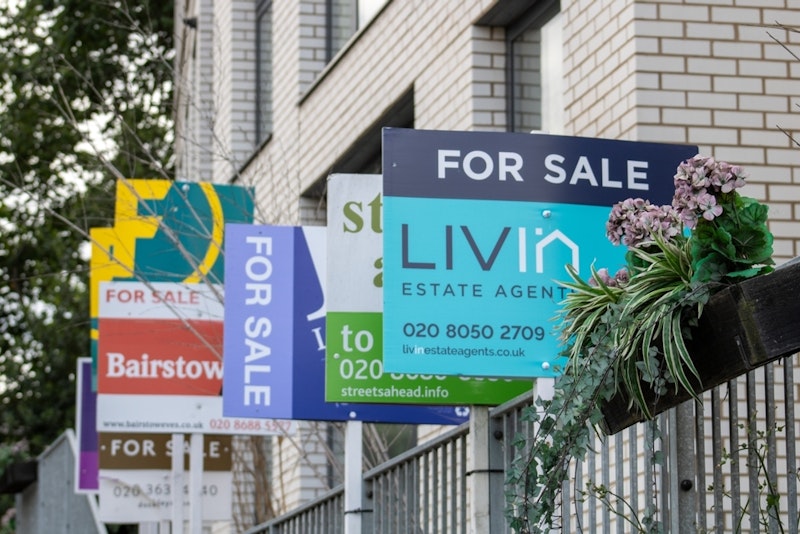Study Notes
GCSE Geography | London's Housing Crisis (UK City Study: London 6)
- Level:
- GCSE
Last updated 18 Mar 2025
London's population is increasing by about 100,000 each year, however there are currently only an extra 38,000 homes being built annually to accommodate this growth. The target for new home building in London is 81,000 homes per year - annual home building targets have not been met since 2001. As a result London has a severe housing shortage and this has pushed house prices up dramatically, even in the most deprived areas of London. Prices are rising faster in London than anywhere else in the UK, particularly in inner London - and the city is seen to have a housing crisis.
This reflects the current patterns of renting and home ownership in the city...
- In London only 46.7% of houses are owner occupied, compared to 64% across the rest of the UK
- About 23% of London households are social rented, compare to 16% across the rest of the UK
- 30.1% of homes are privately rented in London, compared to 19% across the rest of the UK
In December 2024 the average house price in London was £550,000 compared to £290,000 across the UK - but this varies widely across London. Over 400,000 properties in London are valued at £1 million or more, concentrated in Kensington & Chelsea, Westminster, Camden, Hammersmith & Fulham, and Richmond Upon Thames - this is 52% of the number of properties valued at £1 million or more across the UK.
London residents pay at least 50% more for rent on average than anywhere else in the UK.

The greenbelt
Most people agree that London needs to build much more homes to address the housing crisis. However, the concern is that London's population growth has led to urban sprawl - whereby the city has spread out into the surrounding countryside, and any further growth needs to be controlled. There is a greenbelt around London to protect the surrounding area from urban sprawl.
Greenbelt - a zone of protected land around an urban area which cannot be developed on. They were set up to:
- Prevent urban sprawl by preventing cities from expanding into the countryside
- Protect wildlife by ensuring that habitats (e.g. woodlands) are not loss to development
- Protect farmland
- Provide access to green spaces which is important for recreation and to improve public health
The land designated as greenbelt is decided upon by the local authority - they make it much harder to obtain planning permission for development, and new buildings are only approved under very special circumstances.
Greenfield sites
Due to the extent of London's housing issues, many argue that greenbelt restrictions should be lifted and that we should start building on greenfield sites - these are sites that have never been developed before, like the land pictured below.
Benefits of developing greenfield sites
- Land is often cheaper to develop as there is no need to clean up any old contamination
- Land tends to be cheaper anyway outside of urban areas
- A lack of existing infrastructure (i.e. no roads, pipe networks, etc) mean that developers have more freedom with their plans
- There is likely to be more space to expand
Drawbacks of developing greenfield sites
- Loss of wildlife habitats and farmland
- Increase in traffic on rural roads (which are often not built to cope with large numbers of cars
- Resistance from existing local community who may feel that new developments spoil the 'feel' of the countryside, and do not want to live next to a construction site with the noise and visual impact
- Rural locations do not have enough services, e.g. schools and doctors, to cope with new housing developments

Brownfield sites
Rather than building on land in the countryside, developers can choose to re-use land within urban areas that has been previously used but has been left derelict - these are brownfields sites, and due to deindustrialisation London has plenty of them so regenerate into new housing. One example is Coal Drops Yard at Kings Cross where blocks of flats have been built inside old Victorian gas holders (pictured below).
Benefits of developing brownfield sites
- Reduces urban sprawl as the area has been developed previously – saving the countryside
- Very run-down areas of the city get redeveloped – vastly improving the environment (which may push up property prices)
- Often infrastructure is already in place, such as pipe work and access roads, which makes developing the site easier and cheaper
- Doesn’t involve the clearance of green spaces, which could lead to habitat lost
Drawbacks of developing brownfield sites
- May disturb urban wildlife habitats which have developed in old abandoned sites, such as nesting peregrine falcons
- Demolition or decontamination of old site and buildings may be needed (which could be expensive)
- Lots of residents close by who might object to the noise as building work takes place, or the increase in traffic into the area
- They may have historical or cultural significance, and developing on them may result in the loss of important heritage and architectural elements


You might also like

Cities - Urban Ingenuity and Regeneration
19th July 2011

The Crowdfunded Bridge
17th December 2015

Urban Farms and Vertical Farming
29th August 2017

How polluted in your street?
10th January 2018

Rush hour in Los Angeles
16th February 2018

The Next 15 Mega Cities - How Nanjing lures new talent
31st January 2019